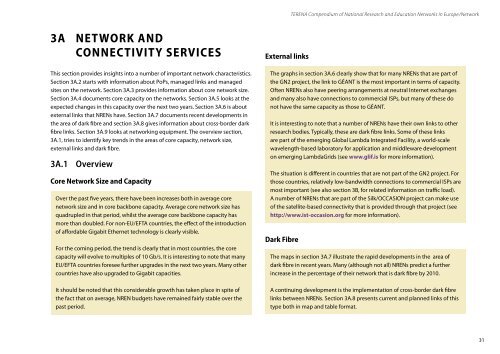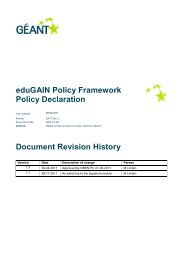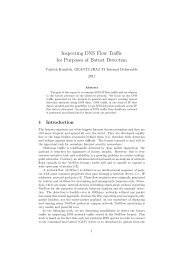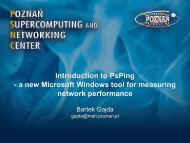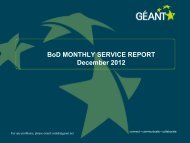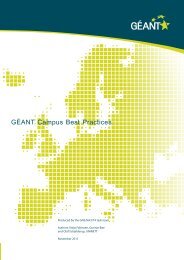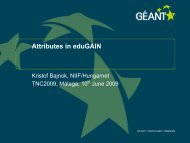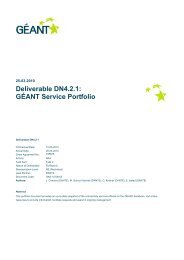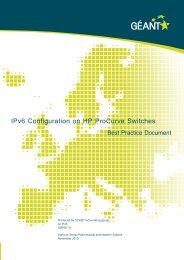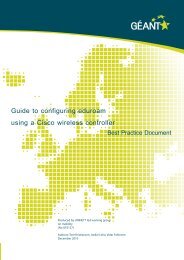TERENA COMPENDIUM - Géant
TERENA COMPENDIUM - Géant
TERENA COMPENDIUM - Géant
You also want an ePaper? Increase the reach of your titles
YUMPU automatically turns print PDFs into web optimized ePapers that Google loves.
<strong>TERENA</strong> Compendium of National Research and Education Networks In Europe /Network3ANET WORK ANDCONNECTIVITY SERVICESExternal linksThis section provides insights into a number of important network characteristics.Section 3A.2 starts with information about PoPs, managed links and managedsites on the network. Section 3A.3 provides information about core network size.Section 3A.4 documents core capacity on the networks. Section 3A.5 looks at theexpected changes in this capacity over the next two years. Section 3A.6 is aboutexternal links that NRENs have. Section 3A.7 documents recent developments inthe area of dark fibre and section 3A.8 gives information about cross-border darkfibre links. Section 3A.9 looks at networking equipment. The overview section,3A.1, tries to identify key trends in the areas of core capacity, network size,external links and dark fibre.3A.1 OverviewCore Network Size and CapacityOver the past five years, there have been increases both in average corenetwork size and in core backbone capacity. Average core network size hasquadrupled in that period, whilst the average core backbone capacity hasmore than doubled. For non-EU/EFTA countries, the effect of the introductionof affordable Gigabit Ethernet technology is clearly visible.For the coming period, the trend is clearly that in most countries, the corecapacity will evolve to multiples of 10 Gb/s. It is interesting to note that manyEU/EFTA countries foresee further upgrades in the next two years. Many othercountries have also upgraded to Gigabit capacities.It should be noted that this considerable growth has taken place in spite ofthe fact that on average, NREN budgets have remained fairly stable over thepast period.The graphs in section 3A.6 clearly show that for many NRENs that are part ofthe GN2 project, the link to GÉANT is the most important in terms of capacity.Often NRENs also have peering arrangements at neutral Internet exchangesand many also have connections to commercial ISPs, but many of these donot have the same capacity as those to GÉANT.It is interesting to note that a number of NRENs have their own links to otherresearch bodies. Typically, these are dark fibre links. Some of these linksare part of the emerging Global Lambda Integrated Facility, a world-scalewavelength-based laboratory for application and middleware developmenton emerging LambdaGrids (see www.glif.is for more information).The situation is different in countries that are not part of the GN2 project. Forthose countries, relatively low-bandwidth connections to commercial ISPs aremost important (see also section 3B, for related information on traffic load).A number of NRENs that are part of the Silk/OCCASION project can make useof the satellite-based connectivity that is provided through that project (seehttp://www.ist-occasion.org for more information).Dark FibreThe maps in section 3A.7 illustrate the rapid developments in the area ofdark fibre in recent years. Many (although not all) NRENs predict a furtherincrease in the percentage of their network that is dark fibre by 2010.A continuing development is the implementation of cross-border dark fibrelinks between NRENs. Section 3A.8 presents current and planned links of thistype both in map and table format.31


